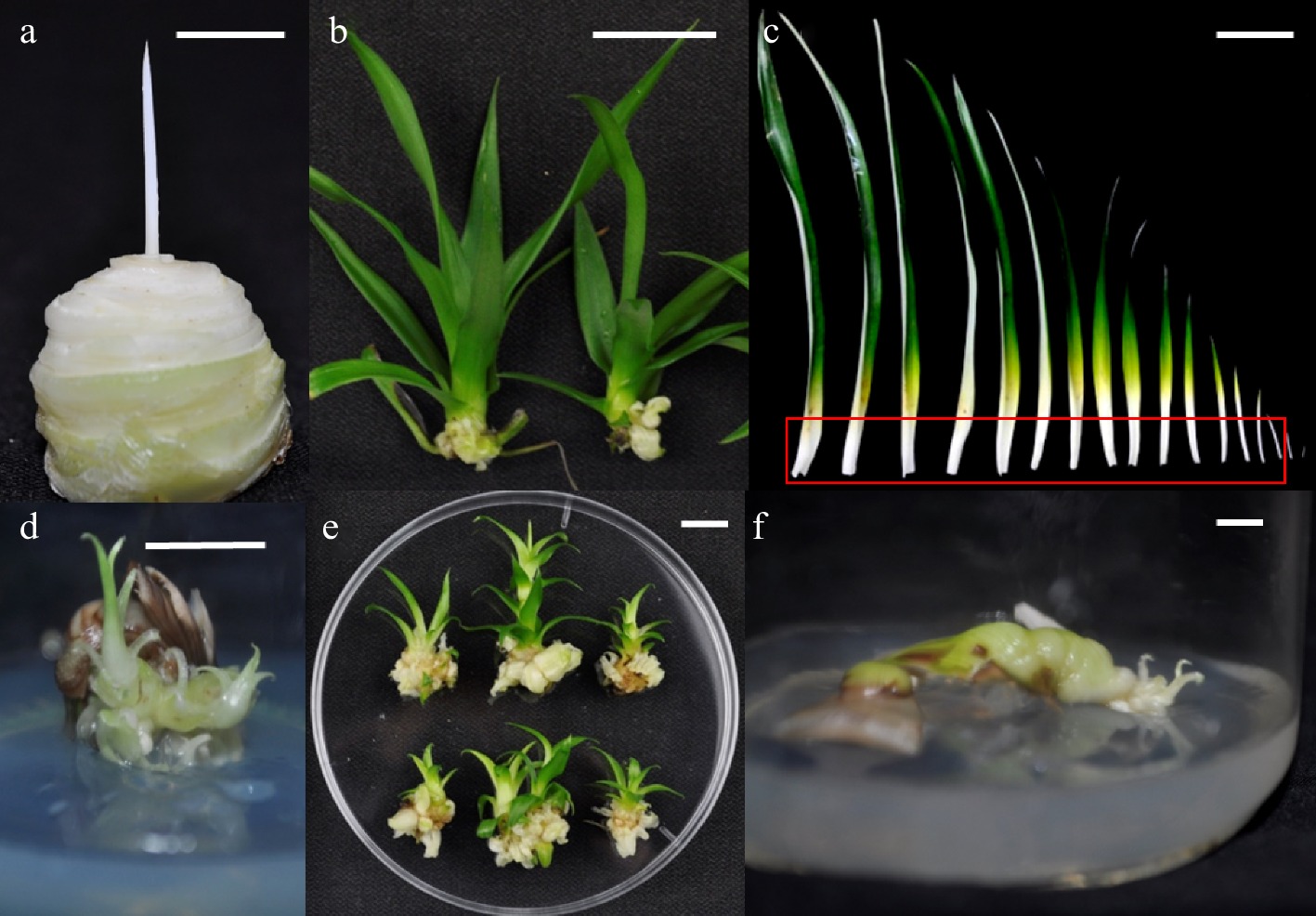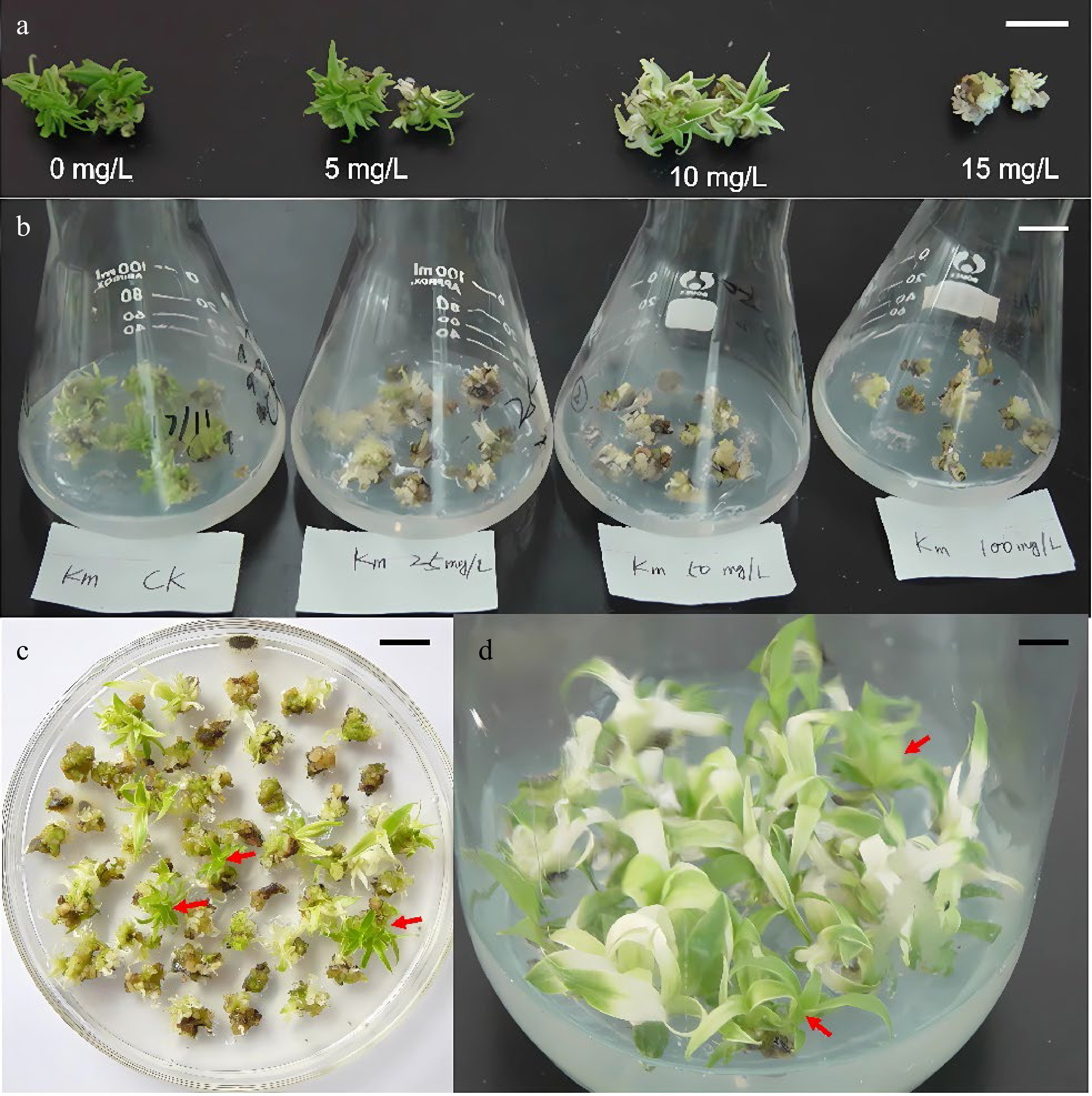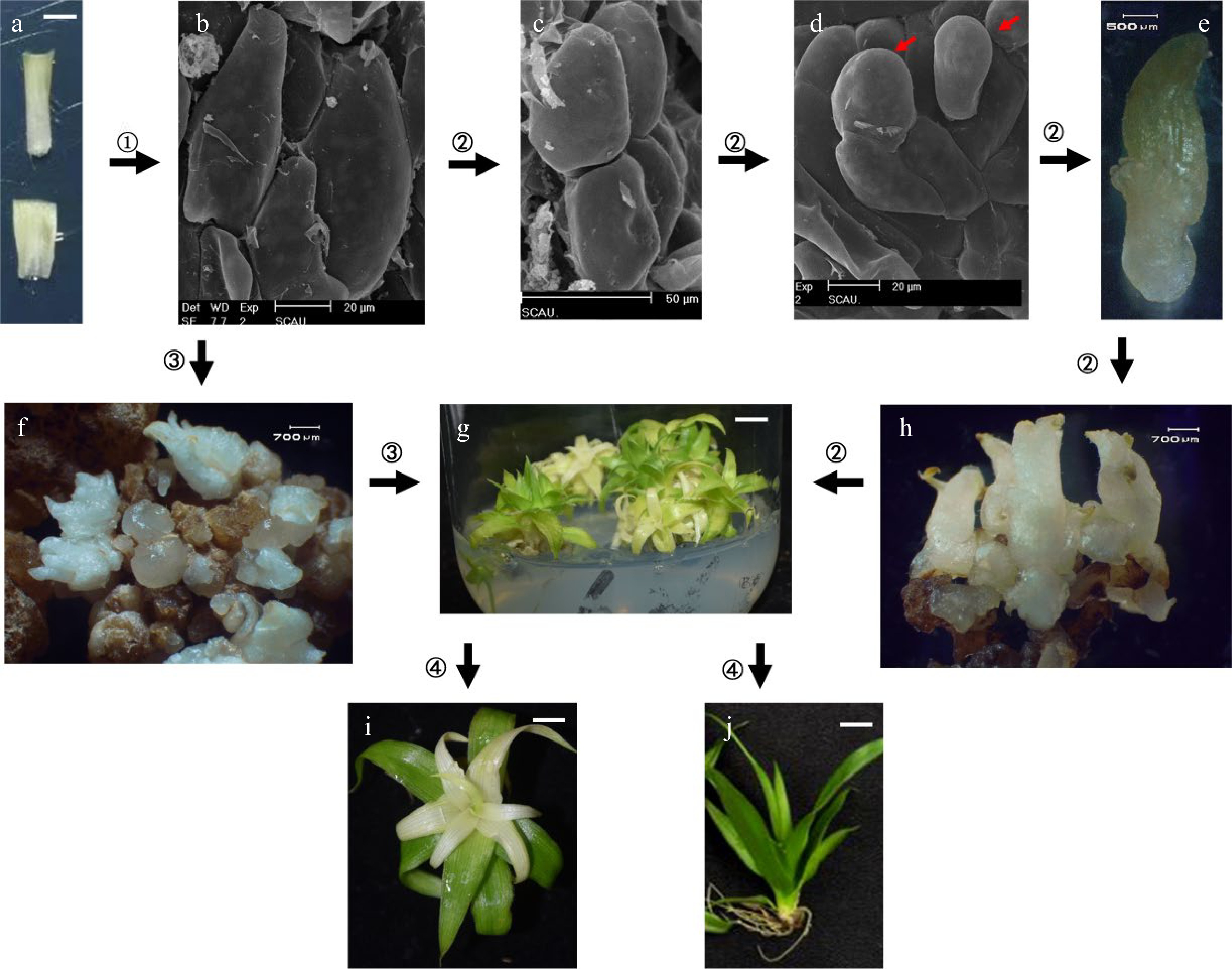-

Figure 1.
Explant materials of pineapple in vitro culture. (a) Shoot apex after leaf removal; (d) Callus and adventitious buds observed after two generations in callus induction culture after vertical cutting of buds; (b) Adventitious buds cultured by tissue culture; (e) At the first generation of induction culture, callus is produced at the base; (c) Leaves, the white part in the red frame is the leaf base; (f) Leaf-based induction for two generations. Bar = 1 cm.
-

Figure 2.
In vitro culture methods are commonly used to produce receptor material. (a) Common callus; (b) Embryogenic callus; (c) Embryogenic suspension cell lines; (d) Embryogenic suspension cell lines cultured on solid culture for 30 d; (e) Non-embryogenic callus sections; (f) Embryogenic callus section. Circle indicates a large nucleus of small individual embryonic cells; (g) Embryogenic suspension cell lines under stereomicroscope; (h) Embryogenic suspension cell lines cultured on solid culture for 30 d under stereomicroscope; (i) Callus subcultured several times on differentiation medium; (j) Differentiated young adventitious buds differentiated on the callus of multiple subcultures; (k) Globular somatic embryo (indicated by the arrow); (l) Mature embryo stage. Bar = 0.5 cm in (a)−(d), (i); bar = 20 μm in (e), (f); Bar = 700 μm in (g), (h), (j), (l); Bar = 300 μm in (k).
-

Figure 3.
Effect of Km on adventitious bud differentiation of pineapple callus. (a), (b) Tolerance of adventitious buds to different concentrations of Km during regeneration of pineapple callus. (c) The first generation of screening culture: red arrows indicate green resistant buds (20 mg/L Km). (d) The second generation was selected and cultured, and the red arrows indicating cut heads are green resistant buds (30 mg/L Km).
-

Figure 4.
Flow chart of the pineapple transformation system. (a) Leaf base (Bar = 0.5 cm). (b) Non-embryogenic cells (scanning electron microscopy, SEM, Bar = 20 μm ). (c) Embryogenic cells (SEM, Bar = 50 μm). (d) Somatic embryogenesis, where the red arrows indicate the original embryo (SEM, Bar = 20 μm). (e) Mature somatic embryos (Bar = 500 μm). (f) Adventitious shoot regeneration from callus (Bar = 700 μm). (g) After three consecutive generations of screening, the regenerated plants are green for Km-resistant transformed buds (Bar = 0.5 cm). (h) Somatic embryos produced from embryogenic callus (Bar = 700 μm ). (i) Km-negative plants (Bar = 0.5 cm). (j) Transforming buds (Bar = 0.5 cm). ① Dedifferentiation culture; ② Somatic embryogenesis pathway; ③ Organogenesis pathway; ④ Rooting culture.
-
Number of generations filtered Km
(mg/L)Number of
receptor materialsTotal number of adventitious buds Number of whitening buds Number of white cores Number of green buds Proportion of
green buds (%)1 20 200 357 68 97 192 53.78 2 30 192 358 102 88 168 46.93 3 50 168 383 82 151 150 39.16 4 50 150 197 26 90 81 41.12 5 60 81 251 81 122 48 19.12 6 60 48 84 20 42 22 26.19 7 70 22 35 6 26 3 8.57 Total 0.017 Cumulative green bud rate is the product of green bud rate from each generation. Table 1.
Screening results of pineapple common callus as the transformation receptor.
Figures
(4)
Tables
(1)